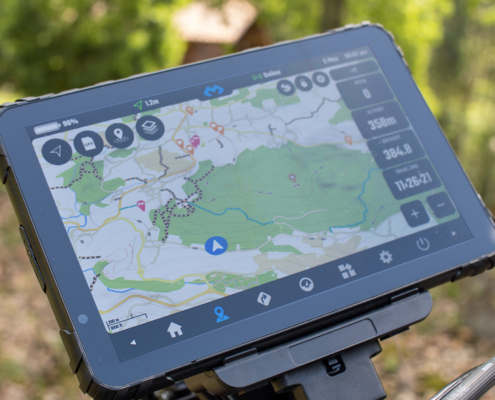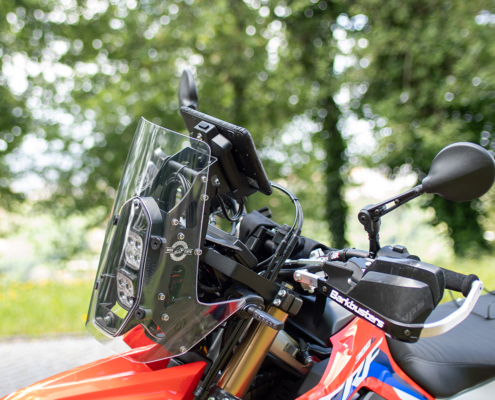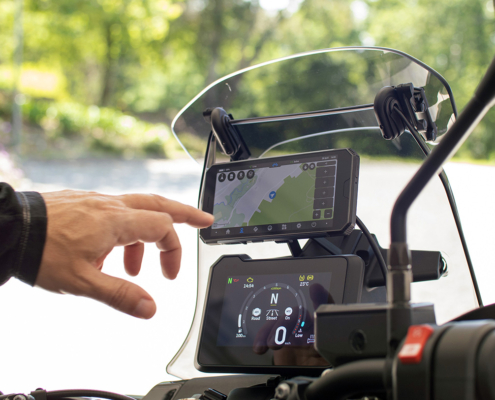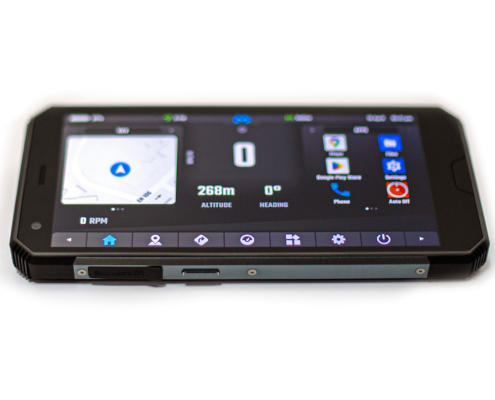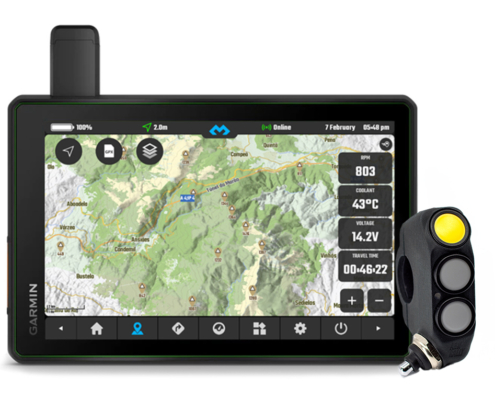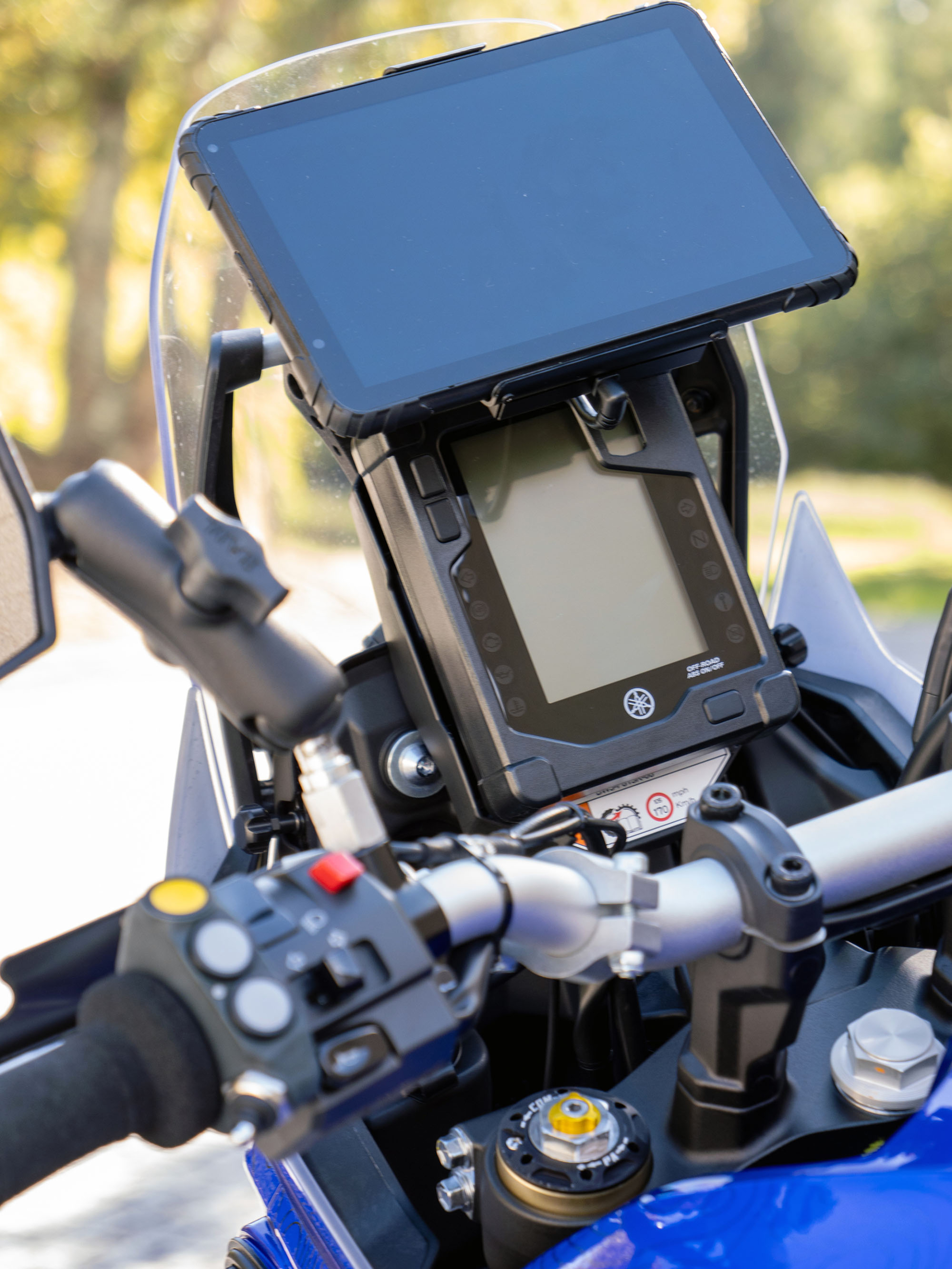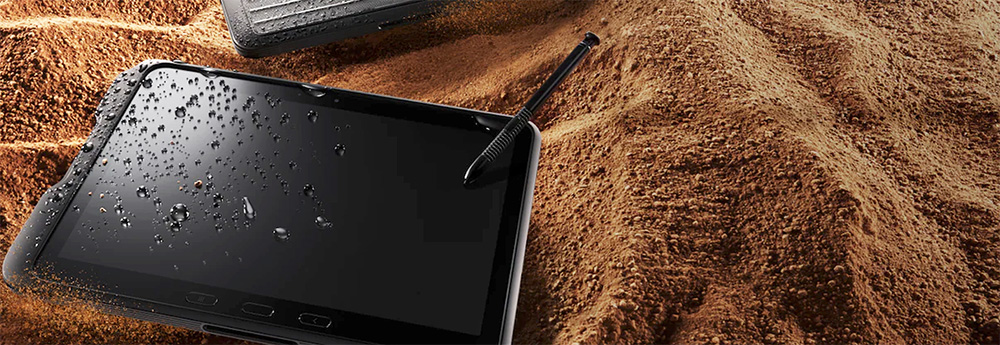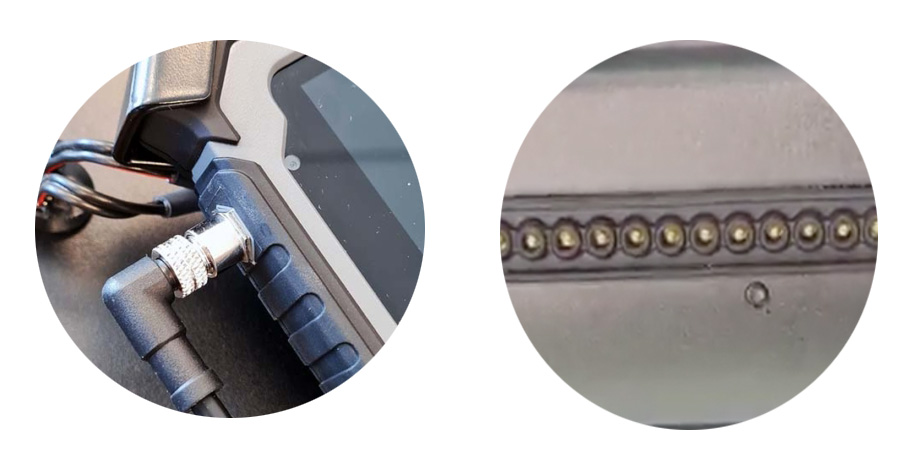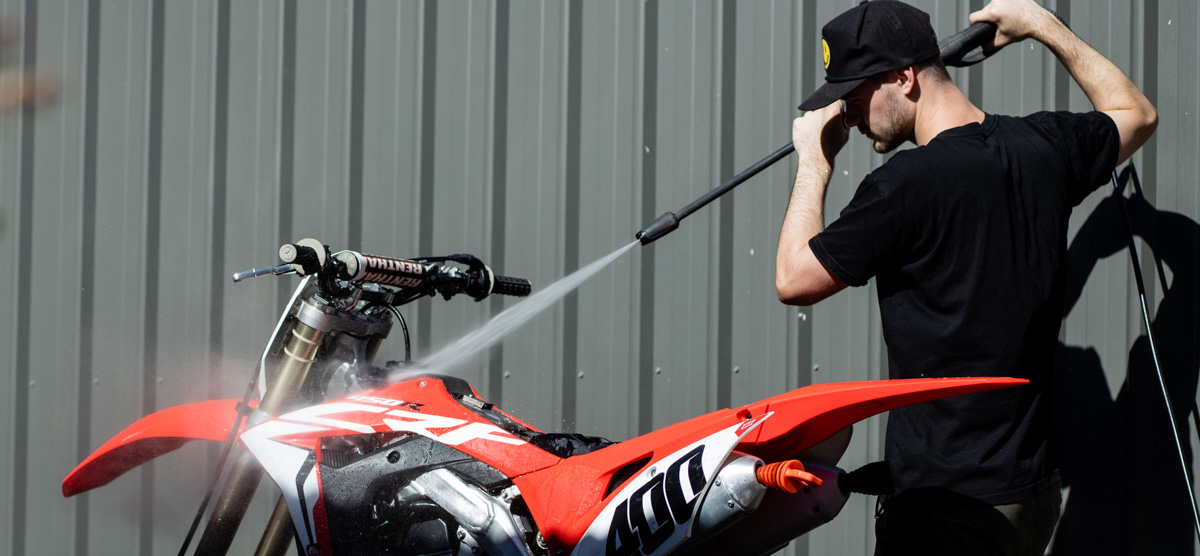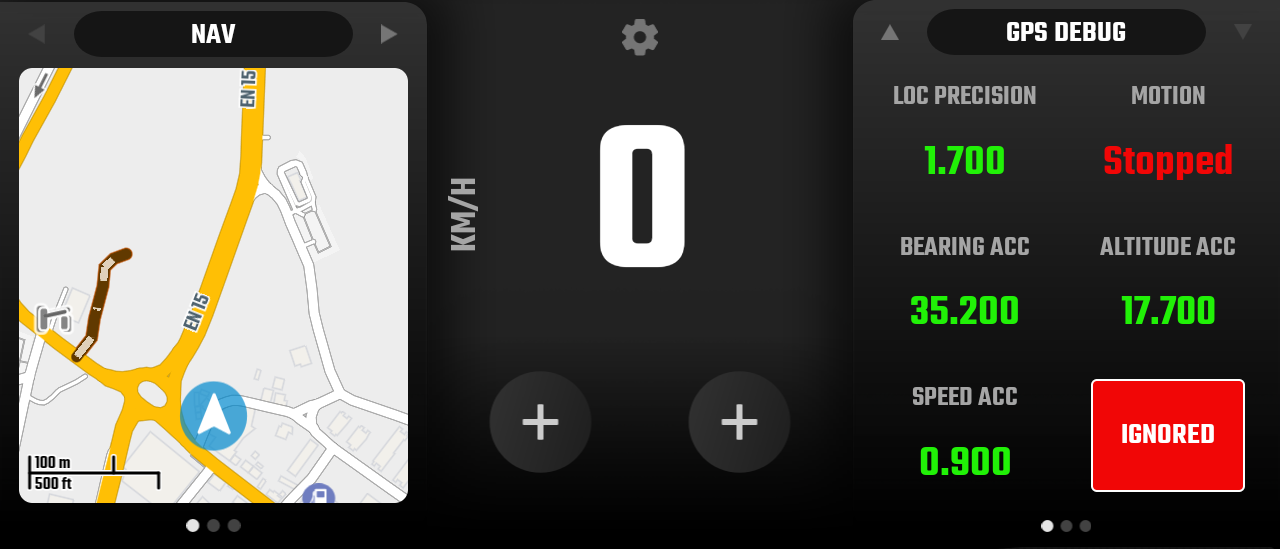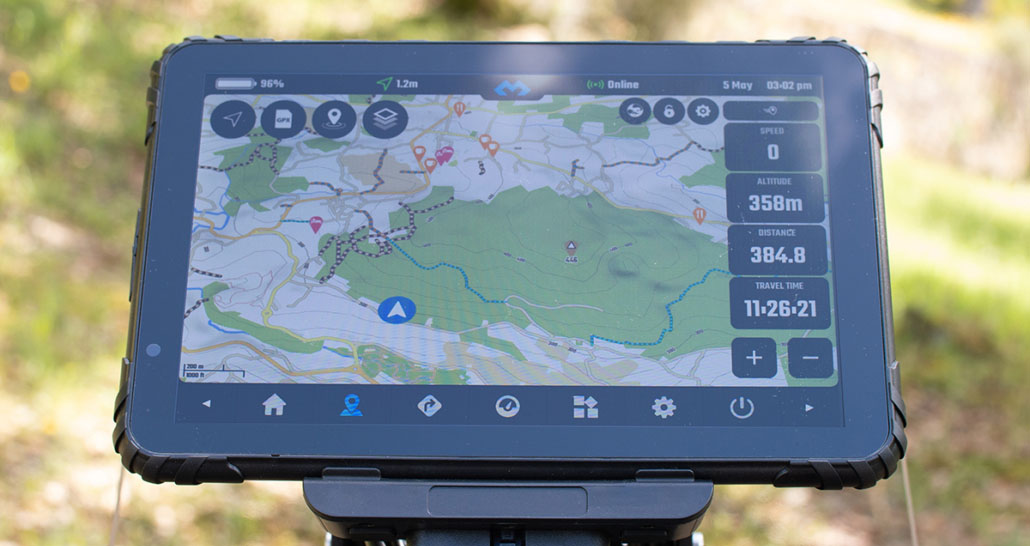Android Navigation Devices
What makes it a good device for motorcycle riding? Lets put and end to the misconceptions about this.
First, who am I to preach to you?
Some call me John, others call me João. I have been developing software and hardware specifically for motorcycles for the past 5-6 years.
I have worked on creating apps (DMD2 being the most famous), bluetooth handlebar controllers (both firmware and software), device firmware, customized Android ROMs, GPS tuning improvements, charging system improvements, and have been working with manufacturers for a while now. I’ve got experience in the whole ecosystem at this point. In addition to that, I also manage the navigation department at Thork Racing, so one of my jobs is managing and developing the DMD branded products, which includes working with the manufacturing of our DMD Navigation Devices.
Will this be a post about “our hardware is better than the others”? No. What I’m hoping to do here is to share my experiences with you to help you make an informed decision on a very important piece of any motorcycle rider’s kit.
I love doing what I do, but being in this position means that I get asked, almost daily, about the same things on this topic, and at the same time I keep reading people’s comments about subjects like this one that completely miss the point.
For this subject in particular, if not for any other reason, I’m writing this here so I can have a link to share every time I see the questions and posts about Android navigation devices.
So… what makes an Android Tablet or Phone good for motorcycle navigation? Is the traditional answer “Brightness / Rugged / Waterproof” correct? NO it is NOT, or at least not all of it.
Beliefs VS Reality
A comment heard often: It needs to have high brightness and be rugged / waterproof!
Sounds good, right? Actually, that’s wrong.
We at DMD / Thork are in a very good position – our sales numbers have made it easy for us to find manufacturers to work with. We have been contacted by almost every rugged tablet manufacturer out there.
So why aren’t we selling more options on our website? Well, in order for us to sell any device we ask the manufacturer to deliver or design a model that can comply with a number of requirements, and guess what, usually they cannot.
Through our growth in the hardware sector, we have made some mistakes along the way, but we learned and now we need our requirements to be met. If they’re not, we know who pays the price – our customers and ourselves!
The Reality – Ideal Requirements:
- A charging system that works without relying on battery power all the time (even if the battery gets hot it should not discharge)
- Non-USB charging solution – ideally a holder developed for motorcycles or a screw type connector
- Internal connectors & components that can handle high vibration
- Waterproof as in fully submersible (both device and holder)
- Sub 2 meter average GPS accuracy with fast GPS fix
- High brightness and proper screen type/layers/tech to reduce reflections
- 12V power managed internally so that there is no external power converters
- Tough but light
- Proper stable OS with Google Play Store and frequent system updates
- A quick and no BS warranty where you can quickly replace a bad unit for a new one
- AND MOST IMPORTANT, built by a manufacturer that is actually trying to make it GOOD FOR MOTORCYCLES (and I mean the manufacturer and not the brand that will sell it to you)
We will explain these points next and why some of the points are so important.
Common Issues – The Big 3
I have sold 8 different device models, tested over 20 different devices, worked with 5 different manufacturers. In the past two years I sold around 2000 Android navigation devices. Let me share with you what typically goes wrong. And I want to say – these are not opinions. Instead, these are hard facts.
#1 – Charging Issues:
This is usually the number one! There are two problems, power delivery (how the power gets to the device, pins, connector, USB, etc) and battery heat management.
The Delivery Problem:
USB – Ideally anything but USB! USB plugs are not reliable, and most devices will allow water to get inside through the USB slot. Additionally, vibration will damage the USB port.
Pogo Pins – If the device uses pogo pins make sure the system is delivered in a motorcycle-specific mount. Additionally, the pins must be individually isolated with per-pin seals.
Screw type connector – This is the ideal system for serious off-road use and typically lasts longer than pogo pins.
Screw type connector and individually sealed pins:
The Battery Discharge Problem:
By now, you are thinking “ok so the main issue with charging is all about the delivery method”. Well… it is not. We have sold hundreds of units of our DMD-T865 with pogo pins and we never had one single charging issue. With other models it was a very common problem, even with screw connector type. So what is the main issue?
Long story short: It does not matter how good the power delivery system is if the battery starts discharging while riding. Modern devices run off the battery. Unfortunately, if the battery gets too hot it will stop charging and start discharging due to consumption.
Lithium batteries cannot charge above a certain temperature. With high-brightness screens, ambient temperatures above 30C, and riding under the sun, it is really easy for ANY device to reach that temperature. Once that happens, you get the case where instead of charging you lose charge. If it continues that way (say on a long day of riding) it is not hard to discharge down to the level where the system will turn off.
So, how do you solve this? As this was a mandatory thing for us, we required the manufacturer to provide a unit that would automatically switch to run off the power input when the battery is unable to charge due to high temperature. With this solution, your worst case scenario is just that the battery is not charging, but it is also not discharging. The battery level remains stable while the battery is cooling off, and charging resumes once the battery is sufficiently cooled down, this means the device wont ever turn off while riding. We only found one single manufacturer willing to provide this.
Bonus no external power converters:
This might be one that touches us on a “personal level”, but you have no idea how many times users decide to bypass external power supplies and feed 12V directly to devices. A device that is designed to internally manage from 5V to 32V is bliss!
#2 – Water Issue:
This is a tough one. First off, forget about the IP rating on devices. Regardless of the IP rating that manufacturers state their device achieves, some manufacturers just cannot get this right. Trust me, we used to have to seal the devices ourselves, one by one, by hand, because we found that if we left this to manufacturers they would mess it up.
Sealing:
The sealing needs to be perfect. On our own devices we have already made changes twice to improve this – it is hard! It’s one of those things that requires experience and lots of trial and error. However, when a manufacturer is invested in providing a solution for an actual motorcycle, they will get this right!
Submersible versus water pressure:
While a device for this purpose should be submersible – and you better make sure of it! – the fight against a water-jet washing machine will inevitably lead to a loss no matter what device you’re considering. You cannot expect a device to hold against the crazy and massive amounts of pressures that these machines produce, so when you wash your motorcycle, either remove the device or at least do not spray your device directly!
Port Caps:
Unfortunately, this one is hard. Port caps are almost always where water gets inside, and A LOT of the time, I am sorry to say, outside of warranty claims this is user fault. We have had warranty claims due to water where caps had been removed – the user removed them because “they are too much of a hassle”. Due to this, for a future model I actually asked the mechanical engineer to try to come up with a design where when you attach the device to the holder, and somehow it automatically closes the caps, or won’t it allow the device to attach unless you do it first.
Do not point that thing at the tablet:
#3 – Vibration Issue:
Most users have no idea about how big of an issue this is. A lot of the time you are a victim of it and you do not even notice (and sometimes you will blame it on the software). Vibration does not usually kill components; most of the time it messes up connections. Sometimes it is an intermittent thing, where it only happens occasionally and is hard to diagnose. It can manifest in strange ways, such as occasional screen ghost touches or permanent screen areas where touch stops working. It can result in the GPS getting no reception, it just stops working or it goes on/off and jumps your position around.
Usually everything that is on the device mainboard is safe as it is soldered down, but the issue will affect “attached” parts – anything with connectors like ports, LCD, antennas, etc.
Even our own devices received multiple revisions until we got this right. In fact, we would not be surprised if we have to keep doing more revisions if new issues arise. So it’s again one of those things again that is solved only through experience and trial and error. However, when a manufacturer is invested in providing a solution for an actual motorcycle they will get this right (where did you read this before?).

